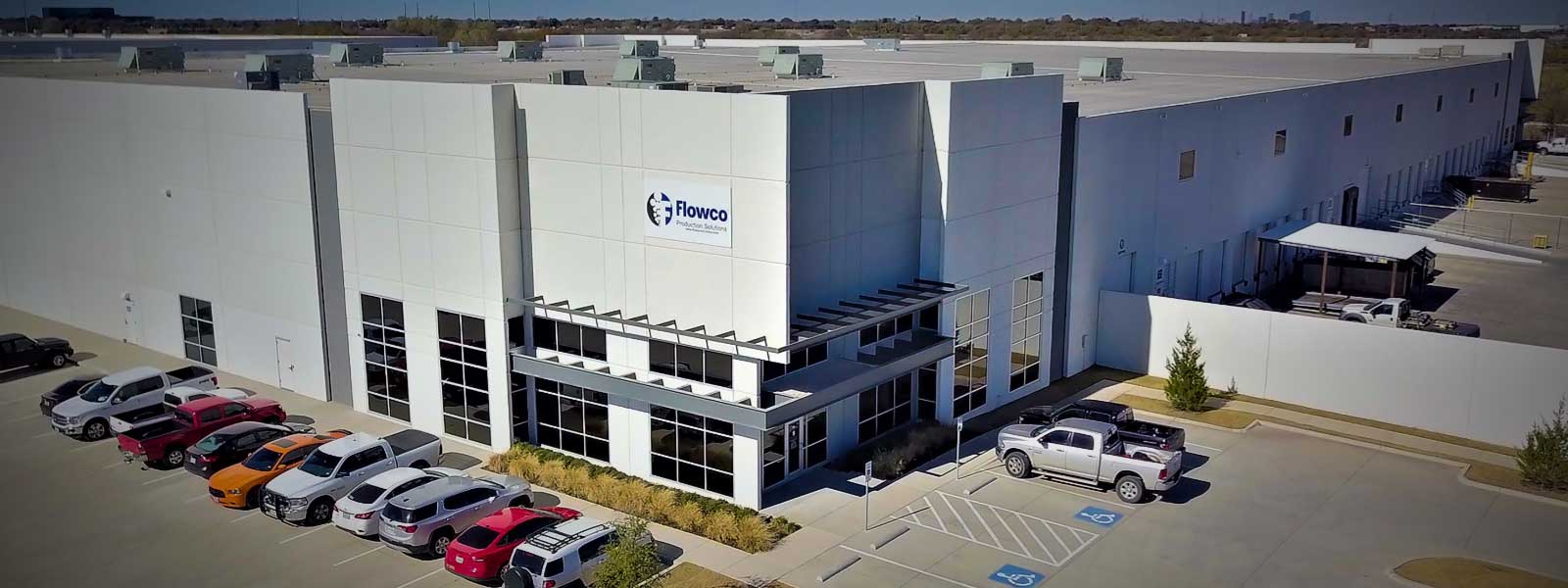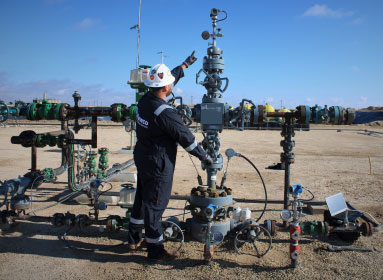
WHO WE ARE, WHERE WE ARE, AND HOW WE CAN HELP
Authors: Charles Kubacak, Lead Production Engineer, Ovintiv (Encana Services Co) – Permian South; Eric Hale, Technical Sales-Gas Lift, Flowco Production Solutions; Matt Young, Sales Director, Flowco Production Solutions
In a lower oil price environment, the industry shifts its priorities from major capital projects such acquiring and drilling new assets to refocus on maximizing the value derived from operating existing wells. Leading North American oil and gas operator, Ovintiv Inc. (formerly Encana) has consistently focused well operations on hitting “type curve rates” or optimizing production rates against well-managed CAPEX parameters. As a result, artificial lift methods have been reevaluated on a well by well basis, along with other production parameters in mature and mid-life assets. These wells have become the new “sweet spot” in the once-frenzied drilling environment during the West Texas boom times.
For the following project, Flowco engineers partnered with Ovintiv to analyze past production profiles in an effort to create a more efficient gas lift design for future wells in the same landing zone. This new concept in gas lift design, was engineered to accommodate higher liquid rate initial production, as well as lower rate later life production without the need for a work-over or slick line rig to make the production change. Reservoir data and predicted rates from similar rock were reviewed prior to the solution selection. Permanent downhole gauges provided both current and historical data to aid in decisions for optimizing the gas injection and making production predictions. The application of specific subject-matter expertise and a thorough, engineering-centric understanding of the application and the equipment, based on solid well data, helped to improve the gas-lift system performance and reduce well-lifting costs. Robust engineering pushed the envelope from traditional approaches to arrive at a solution that has since been replicated on many wells within the production portfolio.
Wolfcamp A formations in the Permian basin have historically encouraged electric submersible pump (ESP) artificial lift due to the lower standing bottom hole pressure (SBHP) and formation gas-to-oil ratio (GOR). Wolfcamp A wells generally have a lower reservoir pressure and gas-to-liquid (GLR) than the Wolfcamp B formation. These shale wells are categorically prolific, but the decline curve is usually steeper when compared, for example, to other formations higher in the Sprayberry trend.
After a thorough engineering review between Flowco and Ovintiv, utilizing historical ESP pressure and production data, we were able to develop a hybrid gas-lift system to be installed in the Wolfcamp A wells generating similar production results as the past ESP production. These hybrid gas-lift systems were installed on a set of wells with 2.875” 6.5# L-80 production tubing placed inside 5.5” 20# P-110 production casing.
A myriad of decisions for the selection of gas lift over ESP including initial cost, reduced OPEX (higher spend for the electricity), and failure frequency were evaluated to determine the best lift type selection while ensuring initial production expectations could be met with the forecasted GOR/GLR. The specific production challenge here was to produce the well to full potential utilizing the annular flow portion of the hybrid gas lift system to match rates typically expected from an ESP system, especially early in the well lifecycle. When the tubing flow portion is used, the hybrid system can further reduce the injection rate for operating the mid to lower range of the well and the general lease operating expenses (LOE).
With the selection of annular flow, and moving later to tubular flow, we somewhat flattened the curve a bit. There comes a point in the well life cycle where annular flow becomes inefficient for optimum production due to the high volumes of gas injection needed to reach the critical velocity up the larger cross-sectional flow area to mitigate the unwanted pressure drops/impacts associated with a slug flow regime. Injection was initially established down the tubing through a series of annular-flow gas lift mandrels to produce high fluid volumes with a cross-sectional flow area of 11.4 in2 for annular flow up the tubing and casing annulus, with the option to transition from annular flow to tubing flow with a 4.7 in2 flow area. Annular flow was initially selected due to the production performance improvement over convention flow and the operator’s ability to provide ample amount of injection gas at surface for these test wells. By installation of a hybrid (rigless) system, we not only swapped the flow path without the need for well intervention, but the design allows us to later run a plunger when the rates allow, all without the requirement of an additional workover.
Nodal analysis modeling showed the vertical lift performance (VLP) curve from the annular flow area of 11.4 in2 or the tubing equivalent of 3.816” internal diameter (ID) and 2.441” ID converge with one another around the 500-800 BLPD range. This gave us a solid baseline to help get an efficient design installed for the operator. The Inflow Performance Relationship (IPR) data allowed us to create a curve and run the sensitivities for different tubing sizes to see the production potential and identify the key transition point from annular flow to tubing flow.
Well economics were enhanced by reallocating some of the required injection gas and will be especially impactful when the hybrid system is able to convert to a GAPL-type application in later well life. The gas in this case, was diverted to help feed another annular flow well that was slugging due to that well falling below critical velocity rates. The system improved overall drawdown and productivity by allowing maximum production during annular flow and the larger cross-sectional flow area achieved additional drawdown on the reservoir compared to a typical tubing-flow method.
By taking these wells down to a much lower fluid rate and then switching to tubing flow, the risk of increasing the flowing bottom hole pressure was minimized, which could potentially result in a loss of production. The tubing selected had full-drift ID with the type of annular flow mandrels run in hole. We took high fluid-rate wells down to a mid to low rate wells and gave the operator the ability to run a plunger, if required. Since we had full drift of the ID of the tubing, we were able to set the bottom hole bumper spring. Setting the hybrid equipment in this step gave us a “cradle to grave” approach to serve the life cycle of the well and eliminated a future work over. The gas lift coupled with plunger lift initiated when well conditions warrant such action, will ultimately extend the life of the well. Given the proclivity of wells in this area for producing paraffin, the plunger action can mechanically cut through tough paraffin deposits reducing build up over time. This mechanical removal mitigates and, in some cases, eliminates decreased production and expensive downhole cleaning treatments.
The hybrid system has also been effective to help de-water frac-impacted wells that may have watered out due to offset frac activity that had direct hydraulic communication from an offset well. This side benefit gives the operator the ability to return to annular flow if the current installation could not handle the higher water cut and fluid volumes. Potentially, this could be helpful in optimizing future frac-impacted wells that are being worked over due to hole-in-tubing or some other critical downhole issue. If the operator anticipates a frac hit, we can design accordingly with a continuous flow model and we can unload the well faster with annular flow. Also, historically, gas-lifted wells have fewer work overs required during the life cycle of the well than those artificially lifted with ESP systems which could dramatically impact total operating expenses and the bottom line.

There are a few options to consider helping mitigate erosional concerns on the wellhead, like setting another b-section or flow cross and flow through both wing valves to further reduce flowing well head back pressure.
This approach in transitioning from annular flow to tubing flow has been beneficial in optimizing production of hybrid gas wells in the Permian. In addition to the targeted outcome of reducing the required lift-gas volume, there have been additional long-term production benefits. The benefits of this well design are not necessarily restricted to the West Texas geography.